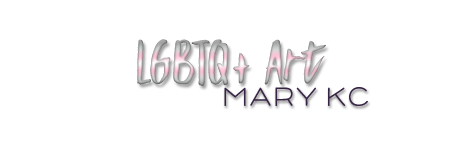In this issue of LGBTQ+ Art, we will discuss certain hidden symbols that represent the queer community through art.
Green carnations on the lapel are a detail that sometimes appears in Victorian paintings and portraits if you look closely enough. Oscar Wilde suggested his friends identify themselves by wearing green carnations. Flowers of a green hue were available at a London shop. The color was weird because they aren't naturally green. White carnations are more common, but a green one is odd. These blossoms are only one example of a wide variety of visual symbols that have alluded to concealed sexualities and identities throughout time.
As with the Green Carnation, peacock feathers were adopted as a queer symbol because male peacocks have iridescent plumage on their tails. Dulac depicted both Charles Ricketts and Charles Shannon in paintings. Shannon wears a peacock feather, a wise symbol, while dressed like a medieval saint. Feathers from peacocks were used in Art Nouveau. The Peacock Room in Whistler was a popular hangout for Ricketts and Shannon.
Until now, it has never been possible in the history of humankind to openly discuss our sexual desires with members of other communities without fear of reprisal. Pocket handkerchiefs were the unspoken language of the men of San Francisco in the '70s. The color of their handkerchiefs signaled men's sexual preferences.
Historically, queer symbols have included peacock plumes, handkerchiefs, and flowers with numerous shapes, colors, and connotations. There have always been hidden meanings in logos and embroidery. Tattoos with nautical stars are popular among lesbians.
My favorite is the rhinoceros with a crimson heart. Being a much-maligned animal, it represents courage and perseverance in facing adversity. However, the roots of certain queer symbols may be traced back to acts of defiance. The pink triangle, a symbol of Nazi concentration camps, is one of the most shocking and enduring examples of image manipulation. It was used to mark gay male detainees as such in Nazi concentration camps by being sewn into their clothes. Lesbians were marked with a threatening black triangle. Specific communities, such as the queer community, have taken it for themselves.
Ancient Greece and Rome were a touchstone for artists because of their more open ideas regarding sexuality, even though queer people there didn't have the labels we use today. They found a means to disguise their ambition as an already established and acceptable practice for the reasons of rich past and great literature.
Whether you want to use the names Hadrian and Antinoüs or Achilles and Patroclus, all are acceptable. The sensual depiction of two women in an embrace, with the dress falling from one of the figures' shoulders and two birds mimicking their shape from behind, is a common one used by artists; it is based on Simeon Solomon's image of Sappho, a Greek poet from Lesbos, from which the word "lesbian" is derived.
Queer coding is not limited to visual mediums. The gay community used Polari slang from the 1930s through the 1960s. Polari is an amalgam of slang terms from all around the world. Between 500 and 600 Yiddish words were spoken by circus performers, wrestlers, and merchant sailors. The gay community generally welcomed this as a means of safe and open contact. Some phrases that originated in Polari Cottaging and cruising are still used today.
Art and literature throughout time have left hints about queer identities and experiences. I believe attempting to describe the queer aesthetic without resorting to stereotypes is futile. No one individual's queerness ever has an easy explanation.
There are a lot of people speaking out, and they all have different backgrounds and perspectives. As time goes on, artistic styles change. LGBTQ+ artists throughout history have been impacted by their contemporaries. The lack of self-portraits allows for the development of recurring ideas and techniques we may learn about ourselves. We need to reclaim symbols. Because of the inherent nature of repetition, both light and images are encoded in our genetic material.
Photos of drag queens may be colorful, outrageous, or sophisticated. I view it as otherness. Anything outside of the mainstream is deemed heteronormative. Perhaps a gaydar is part of the equation. There are particular aesthetics and subcultures under the LGBTQ+ umbrella, like flowers. It's no surprise that as laws have become more inclusive, the queer expression of the LGBTQ community has blossomed. More and more people are embracing openly queer and loud artwork. Fewer individuals employ these symbols and codes, which were supposed to secure them.
Even in more brazen times, such secret codes and aesthetics may be found with a bit of digging. It seems fascinating and easy to refer to. If folks are curious, they will read it; otherwise, they may pass. The work of contemporary artists centers on the examination, critique, and confrontation of earlier queer representations.
Humans are products of their civilizations. And maybe old figures. Perhaps fables. Perhaps it is the work of others. This means that secret languages constantly develop, reemerge, and speak to us.
Thank you for tuning in to this month's edition of LGBTQ+ Art, and we will see you in the next one!

